

The Cave Painters: Probing the Mysteries of the World's First Artists

The Cave Painters is a vivid introduction to the spectacular cave paintings of France and Spain—the individuals who rediscovered them, theories about their origins, their splendor and mystery.
Gregory Curtis makes us see the astonishing sophistication and power of the paintings and tells us what is known about their creators, the Cro-Magnon people of some 40,000 years ago. He takes us through various theories—that the art was part of fertility or hunting rituals, or used for religious purposes, or was clan mythology—examining the ways interpretations have changed over time. Rich in detail, personalities, and history, The Cave Painters is above all permeated with awe for those distant humans who developed—perhaps for the first time—both the ability for abstract thought and a profound and beautiful way to express it.
About the Author
Gregory Curtis is the author of Disarmed: The Story of the Venus de Milo. He was the editor of Texas Monthly from 1981 until 2000. His writing has appeared in The New York Times, The New York Times Magazine, Fortune, Time, and RollingStone, among other publications. A graduate of Rice University and San Francisco State College, he lives with his wife in Austin, Texas.
Paperback: 288 pages
Publisher: Anchor; Reprint edition (October 9, 2007)
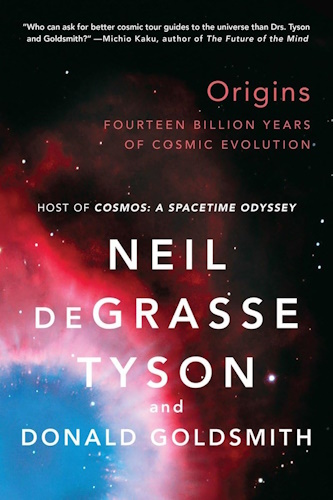

Origins: Fourteen Billion Years of Cosmic Evolution

“Who can ask for better cosmic tour guides to the universe than Drs. Tyson and Goldsmith?” ―Michio Kaku, author of Hyperspace and Parallel Worlds
Our true origins are not just human, or even terrestrial, but in fact cosmic. Drawing on recent scientific breakthroughs and the current cross-pollination among geology, biology, astrophysics, and cosmology, ?Origins? explains the soul-stirring leaps in our understanding of the cosmos. From the first image of a galaxy birth to Spirit Rover's exploration of Mars, to the discovery of water on one of Jupiter's moons, coauthors Neil deGrasse Tyson and Donald Goldsmith conduct a galvanizing tour of the cosmos with clarity and exuberance. 32 pages of color illustrations
About the Author
Neil deGrasse Tyson is an astrophysicist with the American Museum of Natural History, director of its world-famous Hayden Planetarium, host of the hit radio and TV show StarTalk, and the New York Times best-selling author of Astrophysics for People in a Hurry. He lives in New York City.
Paperback: 352 pages
Publisher: W. W. Norton & Company; 1 edition (September 2, 2014)


Cosmos is one of the bestselling science books of all time. In clear-eyed prose, Sagan reveals a jewel-like blue world inhabited by a life form that is just beginning to discover its own identity and to venture into the vast ocean of space. Featuring a new Introduction by Sagan’s collaborator, Ann Druyan, full color illustrations, and a new Foreword by astrophysicist Neil deGrasse Tyson, Cosmos retraces the fourteen billion years of cosmic evolution that have transformed matter into consciousness, exploring such topics as the origin of life, the human brain, Egyptian hieroglyphics, spacecraft missions, the death of the Sun, the evolution of galaxies, and the forces and individuals who helped to shape modern science.
About the Author
Carl Sagan served as the David Duncan Professor of Astronomy and Space Sciences and Director of the Laboratory for Planetary Studies at Cornell University. He played a leading role in the Mariner, Viking, Voyager, and Galileo spacecraft expeditions, for which he received the NASA Medals for Exceptional Scientific Achievement and (twice) for Distinguished Public Service. His Emmy- and Peabody–winning television series, Cosmos, became the most widely watched series in the history of American public television. The accompanying book, also called Cosmos, is one of the bestselling science books ever published in the English language. Dr. Sagan received the Pulitzer Prize, the Oersted Medal, and many other awards—including twenty honorary degrees from American colleges and universities—for his contributions to science, literature, education, and the preservation of the environment. In their posthumous award to Dr. Sagan of their highest honor, the National Science Foundation declared that his “research transformed planetary science . . . his gifts to mankind were infinite.” Dr. Sagan died on December 20, 1996.
Paperback: 432 pages
Publisher: Ballantine Books (December 10, 2013)
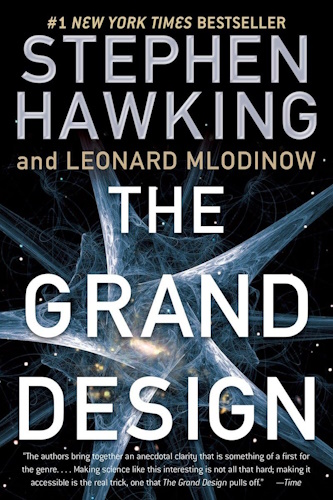

When and how did the universe begin? Why are we here? What is the nature of reality? Is the apparent “grand design” of our universe evidence of a benevolent creator who set things in motion—or does science offer another explanation? In this startling and lavishly illustrated book, Stephen Hawking and Leonard Mlodinow present the most recent scientific thinking about these and other abiding mysteries of the universe, in nontechnical language marked by brilliance and simplicity.
According to quantum theory, the cosmos does not have just a single existence or history. The authors explain that we ourselves are the product of quantum fluctuations in the early universe, and show how quantum theory predicts the “multiverse”—the idea that ours is just one of many universes that appeared spontaneously out of nothing, each with different laws of nature. They conclude with a riveting assessment of M-theory, an explanation of the laws governing our universe that is currently the only viable candidate for a “theory of everything”: the unified theory that Einstein was looking for, which, if confirmed, would represent the ultimate triumph of human reason.
About the Author
Stephen Hawking was the Lucasian Professor of Mathematics at the University of Cambridge for thirty years and the recipient of numerous awards and honors including the presidential Medal of Freedom. His books for the general reader include My Brief History, the classic A Brief History of Time, the essay collection Black Holes and Baby Universes, The Universe in a Nutshell, and, with Leonard Mlodinow, A Briefer History of Time and The Grand Design. Stephen Hawking died in 2018.
Leonard Mlodinow received his doctorate in theoretical physics from the University of California at Berkeley, and teaches at Caltech. He is the New York Times bestselling author of The Drunkard’s Walk: How Randomness Rules our Lives, Subliminal: How Your Unconscious Mind Rules Your Behavior, War of the Worldviews: Science versus Spirituality (with Deepak Chopra), Feynman’s Rainbow: A Search for Beauty in Physics and in Life, and Euclid’s Window: The Story of Geometry from Parallel Lines to Hyperspace. He also wrote for Star Trek: The Next Generation. He lives in South Pasadena, California.
Paperback: 208 pages
Publisher: Bantam; Reprint edition (2012)
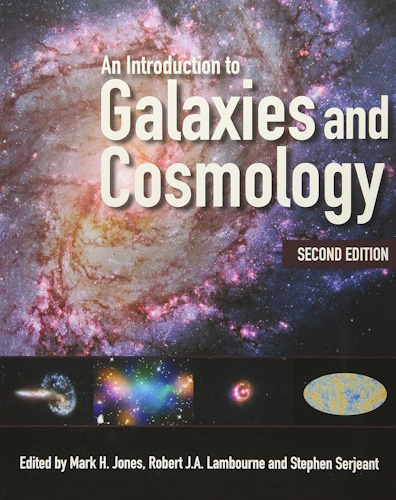

An Introduction to Galaxies and Cosmology

This well-received textbook has been designed by a team of experts for introductory courses in astronomy and astrophysics. Starting with a detailed discussion of our Galaxy, the Milky Way, it goes on to give a general introduction to normal and active galaxies including models for their formation and evolution. The second part of the book provides an overview of cosmological models, discussing the Big Bang, dark energy and the expansion of the Universe. This second edition has been updated to reflect the latest developments and observations, while still probing the unresolved questions at the forefront of research. It contains numerous learning features such as boxed summaries, exercises with full solutions, a glossary and a supporting website hosting further teaching materials. Written in an accessible style that avoids complex mathematics, and illustrated in colour throughout, this text is suitable for self-study and will appeal to amateur astronomers as well as students.
Paperback: 450 pages
Publisher: Cambridge - Open University; Revised edition (February 9, 2015)
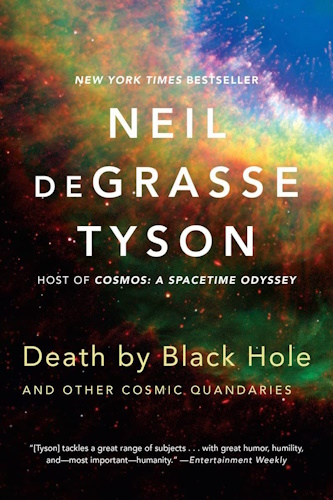

Death by Black Hole: And Other Cosmic Quandaries

Loyal readers of the monthly "Universe" essays in Natural History magazine have long recognized Neil deGrasse Tyson's talent for guiding them through the mysteries of the cosmos with clarity and enthusiasm. Bringing together more than forty of Tyson's favorite essays, ?Death by Black Hole? explores a myriad of cosmic topics, from what it would be like to be inside a black hole to the movie industry's feeble efforts to get its night skies right. One of America's best-known astrophysicists, Tyson is a natural teacher who simplifies the complexities of astrophysics while sharing his infectious fascination for our universe.
About the Author
Neil deGrasse Tyson is an astrophysicist with the American Museum of Natural History, director of its world-famous Hayden Planetarium, host of the hit radio and TV show StarTalk, and the New York Times best-selling author of Astrophysics for People in a Hurry. He lives in New York City.
Paperback: 384 pages
Publisher: W. W. Norton & Company; 1 edition (September 2, 2014)
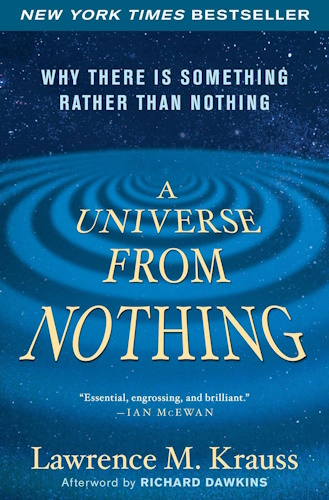

A Universe from Nothing: Why There Is Something Rather than Nothing

Bestselling author and acclaimed physicist Lawrence Krauss offers a paradigm-shifting view of how everything that exists came to be in the first place.
“Where did the universe come from? What was there before it? What will the future bring? And finally, why is there something rather than nothing?”
One of the few prominent scientists today to have crossed the chasm between science and popular culture, Krauss describes the staggeringly beautiful experimental observations and mind-bending new theories that demonstrate not only can something arise from nothing, something will always arise from nothing. With a new preface about the significance of the discovery of the Higgs particle, A Universe from Nothing uses Krauss’s characteristic wry humor and wonderfully clear explanations to take us back to the beginning of the beginning, presenting the most recent evidence for how our universe evolved—and the implications for how it’s going to end.
Provocative, challenging, and delightfully readable, this is a game-changing look at the most basic underpinning of existence and a powerful antidote to outmoded philosophical, religious, and scientific thinking.
About the Author
Lawrence M. Krauss is director of the Origins Project at Arizona State University. He is the author of more than 300 scientific publications and nine books, including the bestselling The Physics of Star Trek, and the recipient of numerous international awards for his research and writing. Hailed by Scientific American as a “rare scientific public intellectual,” he is also a regular columnist for newspapers and magazines and appears frequently on radio and television.
Paperback: 240 pages
Publisher: Atria Books; unknown edition (January 1, 2013)
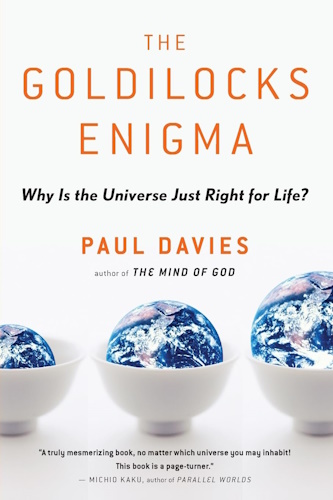

The Goldilocks Enigma: Why Is the Universe Just Right for Life?

The Goldilocks Enigma is Paul Davies’s eagerly awaited return to cosmology, the successor to his critically acclaimed bestseller The Mind of God. Here he tackles all the "big questions," including the biggest of them all: Why does the universe seem so well adapted for life?
In his characteristically clear and elegant style, Davies shows how recent scientific discoveries point to a perplexing fact: many different aspects of the cosmos, from the properties of the humble carbon atom to the speed of light, seem tailor-made to produce life. A radical new theory says it’s because our universe is just one of an infinite number of universes, each one slightly different. Our universe is bio-friendly by accident -- we just happened to win the cosmic jackpot.
While this "multiverse" theory is compelling, it has bizarre implications, such as the existence of infinite copies of each of us and Matrix-like simulated universes. And it still leaves a lot unexplained. Davies believes there’s a more satisfying solution to the problem of existence: the observations we make today could help shape the nature of reality in the remote past. If this is true, then life -- and, ultimately, consciousness -- aren’t just incidental byproducts of nature, but central players in the evolution of the universe.
Whether he’s elucidating dark matter or dark energy, M-theory or the multiverse, Davies brings the leading edge of science into sharp focus, provoking us to think about the cosmos and our place within it in new and thrilling ways.
About the Author
PAUL DAVIES is an internationally acclaimed physicist, cosmologist, and astrobiologist at Arizona State University. He is the author of more than twenty books, including The Mind of God, About Time, How to Build a Time Machine, and The Goldilocks Enigma.
Paperback: 336 pages
Publisher: Mariner Books; Reprint edition (April 29, 2008)
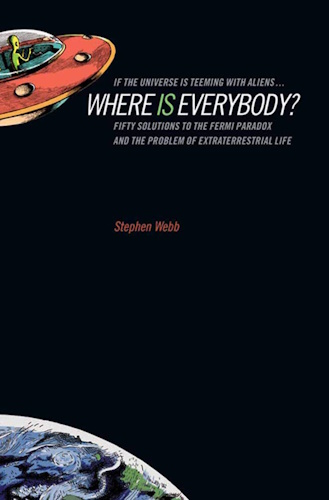

If the Universe Is Teeming with Aliens WHERE IS EVERYBODY?

From Library Journal
In response to Enrico Fermi's famous 1950 question concerning the existence of advanced civilizations elsewhere, physicist Webb critically examines 50 resolutions to explain the total absence of empirical evidence for probes, starships, and communications from extraterrestrials. He focuses on our Milky Way Galaxy, which to date has yielded no objects or signals that indicate the existence of alien beings with intelligence and technology. His comprehensive analysis covers topics ranging from the Drake equation and Dyson spheres to the panspermia hypothesis and anthropic arguments. Of special interest are the discussions on the DNA molecule, the origin of life on Earth, and the threats to organic evolution on this planet (including mass extinctions). Webb himself concludes that the "great silence" in nature probably results from humankind's being the only civilization now in this galaxy, if not in the entire universe. This richly informative and very engaging book is recommended for most academic and public library science collections. --H. James Birx, Canisius Coll., Buffalo, NY Copyright 2002 Reed Business Information, Inc.
From Scientific American
On the way to lunch at Los Alamos Scientific Laboratory one day in 1950, Enrico Fermi and three other physicists--Emil Konopinski, Edward Teller and Herbert York--chatted about flying saucers. At lunch, when the talk had turned to other matters, Fermi suddenly said, "Where is everybody?" His companions realized that the talk of flying saucers had turned his mind to the possibility that there is intelligent life elsewhere in the universe and that he was asking why, if there is, we have seen no sign of it. The question encapsulates what is now known as the Fermi paradox. Webb, lecturer in physics at the Open University in England, presents 49 solutions that have been proposed for the paradox, grouping them according to whether they hold that intelligent extraterrestrials are here, exist but have not communicated, or do not exist. He makes a splendid and enlightening story of it, concluding with his own solution, the 50th: "We are alone." --Editors of Scientific American
Hardcover: 288 pages
Publisher: Copernicus; 2002 edition (October 4, 2002)
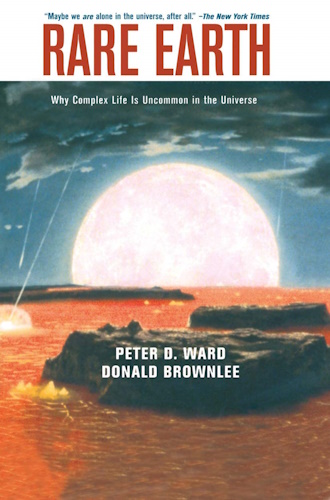

Rare Earth: Why Complex Life is Uncommon in the Universe

What determines whether complex life will arise on a planet, or even any life at all? Questions such as these are investigated in this groundbreaking book. In doing so, the authors synthesize information from astronomy, biology, and paleontology, and apply it to what we know about the rise of life on Earth and to what could possibly happen elsewhere in the universe. Everyone who has been thrilled by the recent discoveries of extrasolar planets and the indications of life on Mars and the Jovian moon Europa will be fascinated by Rare Earth, and its implications for those who look to the heavens for companionship.
Paperback: 338 pages
Publisher: Copernicus; 12/17/03 edition (December 10, 2003)
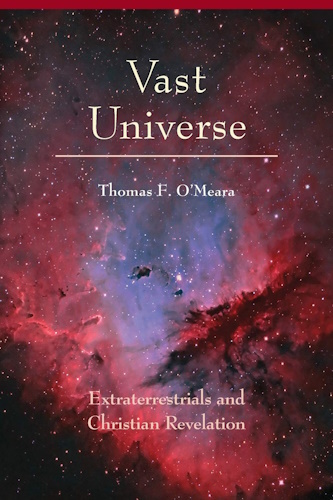

Vast Universe: Extraterrestrials and Christian Revelation

If we have learned anything from recent advances in cosmology and astronomy, it is that we have only barely begun to comprehend the vastness of our universe and all that it contains. For Christians, this raises some fascinating questions:
- If there are intelligent beings out there, what would be their relationship to what Christianity claims is a special history on Earth of life with God?
- Would the fact of persons on other planets banish or modify our understanding of God? Would it reduce the importance of Jesus?
- What role might goodness and evil play in extraterrestrial civilizations?
- Might God have incarnated himself among other races of creatures, as he became incarnate as Jesus among us?
Respectful of the sciences that disclose the reality of the universe, Thomas O'Meara wonders about good and evil, intelligence and freedom, revelation and life as they might exist in other galaxies. In this book, one possible aspect of the universe we live in meets the perspective of Christian revelation.
About the Author
Thomas F. O'Meara, O.P., Warren Professor Emeritus of the University of Notre Dame, is the author of Erich Przywara, S.J.: His Theology and His World (2009) and God in the World: A Guide to Karl Rahner's Theology (Liturgical Press, 2007).
Paperback: 96 pages
Publisher: Michael Glazier (May 1, 2012)
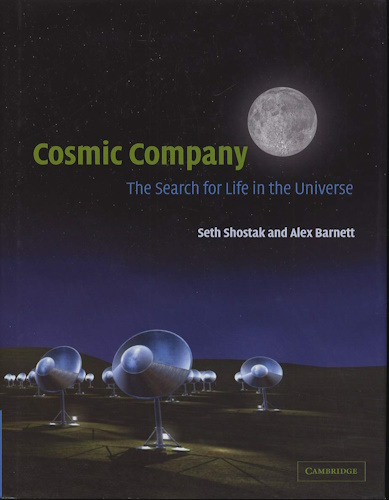

Cosmic Company: The Search for Life in the Universe

In Cosmic Company, Seth Shostak and Alex Barnett ponder the possibility of aliens visiting the Earth, as well as the consequences of receiving a signal from the cosmos proving we're neither alone, nor the most intelligent life forms. They explain why scientists think life might exist on other worlds, and how we might contact it. Shostak and Barnett, experienced writers of popular astronomy, provide an accessible overveiw of the science and technology behind the search for life in the universe. Seth Shostak is a Senior Astronomer at the SETI Institute where he is involved in many of the outreach activities of the Institute, including editing the newsletter, overseeing the Web site, giving talks and writing magazine articles about SETI. He also teaches several informal education classes on astronomy and other topics in the Bay Area. Before coming to SETI, Seth did research work on galaxies using radio telescopes at observatories and universities in America and Europe. Alex Barnett is Programme Director at the National Space Centre. She is well-known in the science centre, planetarium and media worlds, particularly for public and educational programmes involving space and astronomy. She presents BBC's Final Frontier a space and astronomy programme.
Hardcover: 168 pages
Publisher: Cambridge University Press; 1 edition (November 24, 2003)
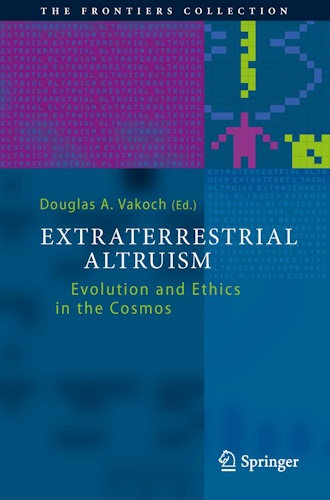

Extraterrestrial Altruism: Evolution and Ethics in the Cosmos

From the Back Cover
Extraterrestrial Altruism examines a basic assumption of the Search for Extraterrestrial Intelligence (SETI): that extraterrestrials will be transmitting messages to us for our benefit. This question of whether extraterrestrials will be altruistic has become increasingly important in recent years as SETI scientists have begun contemplating transmissions from Earth to make contact.
Should we expect altruism to evolve throughout the cosmos, or is this only wishful thinking? Would this make biological sense? Is it dangerous to send messages to other worlds, as Stephen Hawking has suggested? Would extraterrestrial societies be based on different ethical principles? Extraterrestrial Altruism explores these and related questions about the motivations of civilizations beyond Earth, providing new insights that are critical for SETI.
Chapters are authored by leading scholars from diverse disciplines―anthropology, astronomy, biology, chemistry, computer science, cosmology, engineering, history of science, law, philosophy, psychology, public policy, and sociology. The book is carefully edited by Douglas Vakoch, Director of Interstellar Message Composition at the SETI Institute and professor of clinical psychology at the California Institute of Integral Studies. The Foreword is by Frank Drake.
This interdisciplinary book will benefit everybody trying to understand whether evolution and ethics are unique to Earth, or whether they are built into the fabric of the universe.
Series: The Frontiers Collection
Hardcover: 329 pages
Publisher: Springer; 2014 edition (September 15, 2013)
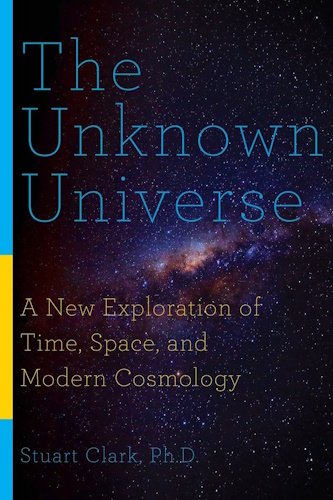

The Unknown Universe: A New Exploration of Time, Space, and Modern Cosmology

A groundbreaking guide to the universe and how our latest deep-space discoveries are forcing us to revisit what we know―and what we don't.
On March 21, 2013, the European Space Agency released a map of the afterglow of the Big Bang. Taking in 440 sextillion kilometres of space and 13.8 billion years of time, it is physically impossible to make a better map: we will never see the early universe in more detail. On the one hand, such a view is the apotheosis of modern cosmology, on the other, it threatens to undermine almost everything we hold cosmologically sacrosanct.
The map contains anomalies that challenge our understanding of the universe. It will force us to revisit what is known and what is unknown, to construct a new model of our universe. This is the first book to address what will be an epoch-defining scientific paradigm shift. Stuart Clark will ask if Newton's famous laws of gravity need to be rewritten; if dark matter and dark energy are just celestial phantoms? Can we ever know what happened before the Big Bang? What’s at the bottom of a black hole? Are there universes beyond our own? Does time exist? Are the once immutable laws of physics changing?
About the Author
Stuart Clark, Ph.D., is a Fellow of the Royal Astronomical Society and is the astrology correspondent for The New Scientist. Stuart holds a first-class honors degree and a Ph.D. in astrophysics. The Sun Kings, which established him as a popular science writer of the highest level, was shortlisted for the Royal Society science book prize and won the Association of American Publishers 2007 Professional and Scholarly Publishing Award for Excellence in the Cosmology and Astronomy category. Stuart lives in England.
Hardcover: 288 pages
Publisher: Pegasus Books; 1 edition (July 5, 2016)
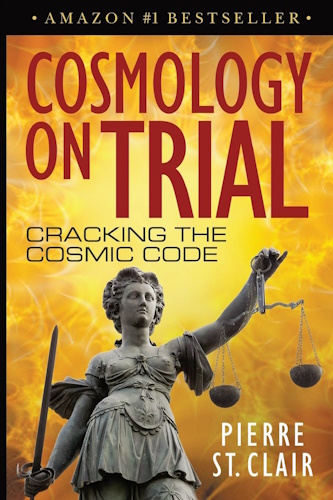

Cosmology on Trial: Cracking the Cosmic Code

What if you knew the anomalies that cosmologists don't discuss in public?
Cosmology on Trial – a remarkable study of unexplained and unsolved mysteries of the universe. New discoveries challenge the Big Bang model, General Relativity, Quantum Mechanics, String Theory, Gravity, Black Holes, & Redshift interpretation. Bestselling author, Pierre St. Clair, examines the latest theories like an attorney in a court of law. The author speaks without complex jargon. "Just the facts, please. Show me the evidence."
Scientific journals cite major disagreements with current models of the universe
The discovery of a ring of nine cataclysmic gamma ray bursts (GRBs) five billion light years across was published in Monthly Notices of the Royal Astronomical Society:
On August 4, 2015, Professor Lajos Balasz announced at a press conference, “This structure contradicts the current models of the universe.” Investigating teams of physicists are trying to verify if known processes of galaxy formation created the ring structure. If not, present theories of the evolution of the universe will need a radical revision.
The May/2014 issue of Scientific American highlighted another serious calamity. "The negative results are beginning to produce if not a full-blown crisis in particle physics, then at least a widespread panic.” Theorists working in particle physics admit they’re in a state of confusion.
Science periodicals, forums, and papers suggest fundamental principles of physics need revising. “Theoretical physics is at a crossroads right now…In a sense we’ve entered a very deep crisis.” Dr. Neil Turok – Director of the Perimeter Institute for Theoretical Physics
We find yet another major problem in the Standard Model of physics. Gravity, dark matter, dark energy, and consciousness comprise over 96% of the universe yet they are completely absent in the Standard Model.
Cosmology on Trial explains why Newtonian Physics, General Relativity, Quantum Mechanics, & String Theory acknowledge inconsistencies in explaining gravitation, redshift interpretation, black holes, particles that exceed light speed, and more. Renowned physicists are clamoring for a new paradigm in cosmology. “We need to make a clean break and embark on a search for a new kind of theory that can be applied to the whole universe – a theory that avoids the confusions and paradoxes, answers the unanswerable questions, and generates genuine physical predictions for cosmological observations.” Dr. Lee Smolin – Bestselling author of The Trouble With Physics
This book digs behind the headlines to reveal the present state of cosmology
- anomalies and inconsistencies are spreading unchecked
- three important initiatives that are routinely ignored
- five cosmological theories not supported by observations nor data
Pierre St. Clair discloses what other authors brush aside. He pursues the big question: Is Big Bang cosmology a true account, or simply a lash-up of unsettled anomalies to preserve the status quo? The author also discusses disparities in published mainstream science reports such as: “Fraud in the Scientific Literature,” “Ripples from the Big Bang,” and "The Higgs Boson."
NASA physicists readily admit 96% of the matter and energy in the universe is unknown. Science only understands 4% of the universe?
“As a scientist and as an educator, I like the idea that we believe things because there’s evidence.” Dr. Richard Dawkins – Oxford University Professor & Bestselling Author
“This book simply makes the very strong point that our cosmology of yesteryear was not based on solid evidence, and our cosmology of today isn't either.” V. DiCara – US author based in Japan
About the Author
Bestselling author Pierre St. Clair focuses on anomalies in cosmological theories. Recently he won the prestigious Sir J. C. Bose Award for Investigative Journalism in the field of Science and Technology for his book Cosmology on Trial. Although born in London, at five years of age his family emigrated to Canada. His mother was a cultured lady who sent him for violin and music theory lessons when he was only six. As a teenager his interest in classical violin dwindled. He bought his first guitar, taught himself how to play, formed a band, and began performing locally. Within a few short years he was touring throughout Canada and the US. Music was always his first love, and remains so. His journalism career began as a result of a college girlfriend's mother predicting his success as a writer. The daughter of a missionary in Shanghai, she had grown up in China and pursued an interest in the occult sciences, including palmistry. One Saturday afternoon she asked to see his hand. After a few minutes study she predicted, "One day you'll become an accomplished writer." QUOTES FROM THE AUTHOR "I enjoy digging behind the scenes to find out what is really happening beneath the headlines. That's why I became an investigative journalist." "Current theories about the origin of the universe lack verifiable data. In spite of this, many ideas masquerade as relevant theories and compete for greater elegance just like beauty pageant contestants." "COSMOLOGY ON TRIAL" An overview of cosmology that introduces the reader to unexplained and unsolved mysteries of the universe which are rarely discussed in Academia. The author reveals that Newtonian physics, General Relativity, Quantum Mechanics, and String Theory have still not proven whether Gravity is a wave, a graviton particle, or even a fabric of spacetime. Gravity, the most common force in nature, is not even included in the Standard Model of Physics. NASA physicists admit that 96% of the matter and energy in the universe is a mystery. REVIEWS "Scientific progress and complacency go ill together, and St Clair has done a superb job in actually advancing the cause of real science." M. Lyons - USA "In the course of his dissertation, St. Clair takes on much of modern science and its concomitant contemporary philosophy, showing where they are right, but, more importantly, where they are wrong. His approach is balanced, enabling the attentive reader to walk away with a true education." S. J. Rosen – New York
Paperback: 246 pages
Publisher: CreateSpace Independent Publishing Platform; second edition (February 12, 2017)
![]()
![]()